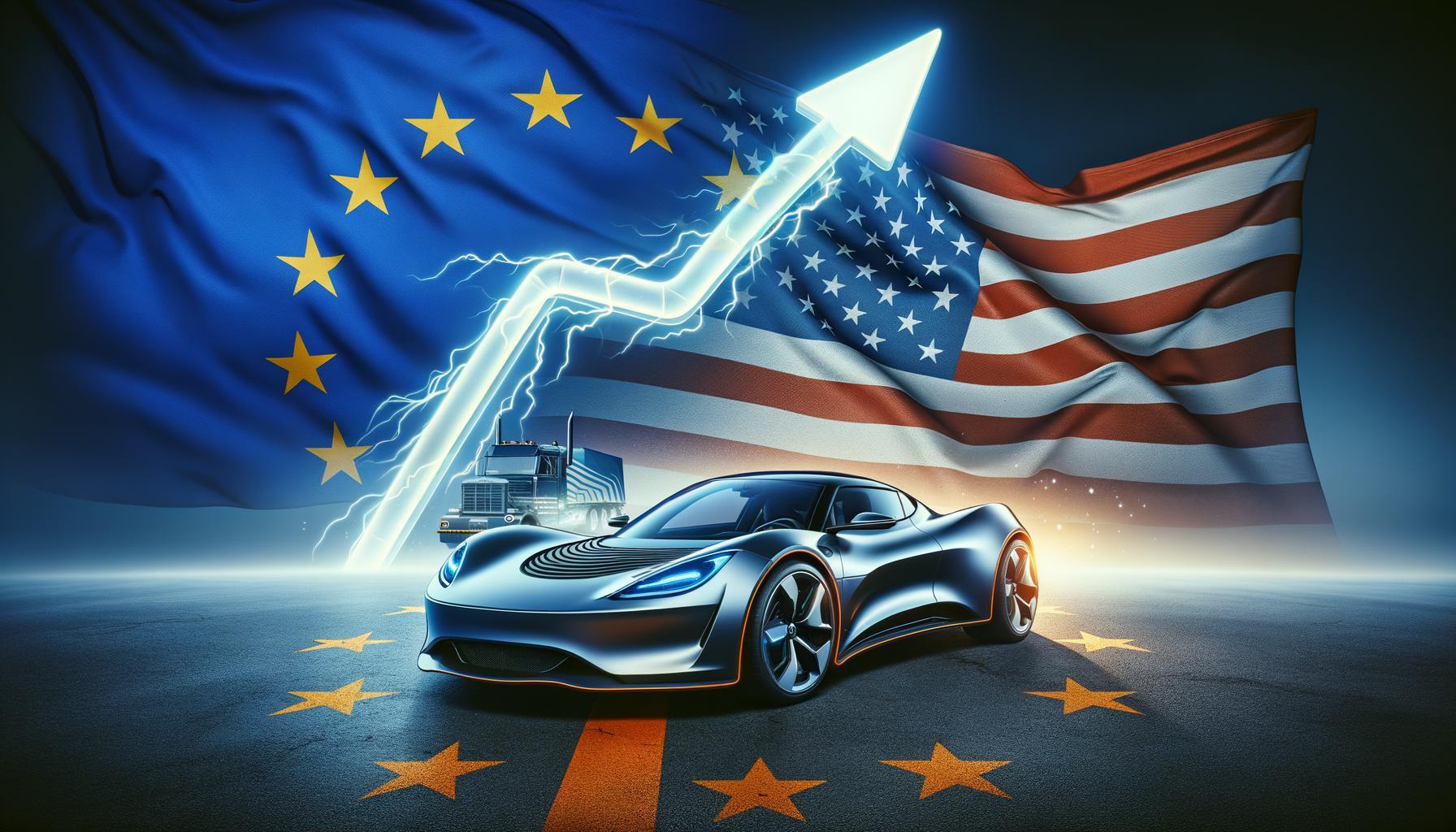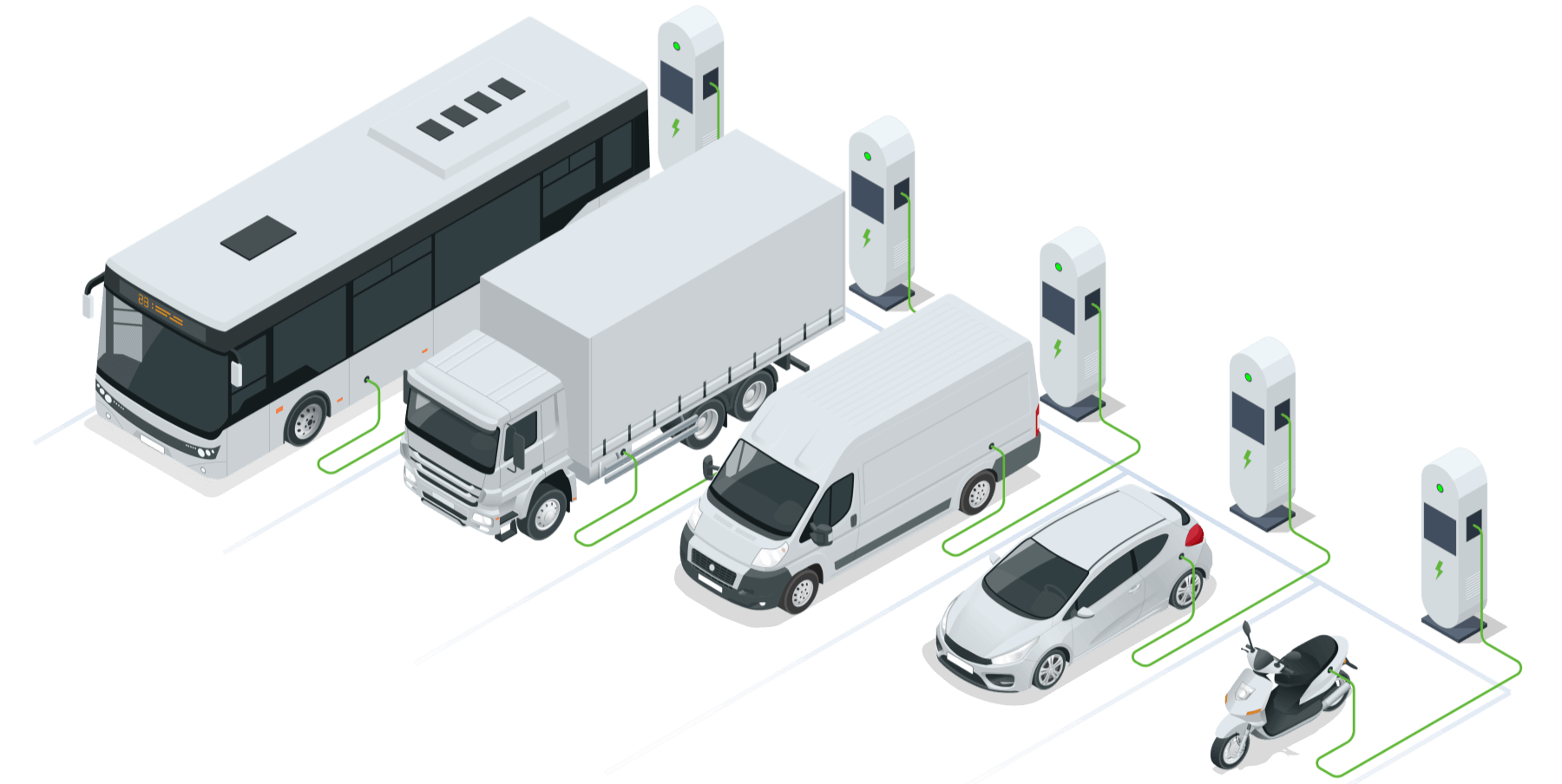EV sales in Europe and America (Jan to Jun 2023) – Industry News 2308

Preface
EV sales in EU and US (Jan to Jun 2023)
In the first half of 2023, EV sales in EU and US have shown a rapid growth trend, with Europe achieving an ‘eleven consecutive rise’, EV sales in the United States have surged by 50%.

European Electric Vehicle Market
According to data released by the European Automobile Manufacturers’ Association (ACEA), new car registrations in Europe increased by 19% YoY in June, reaching 1.27 million vehicles. Among them, sales of pure electric cars in Europe surged by 55%, while deliveries of diesel cars decreased by 10% compared to the same period last year. The continuous growth of new car registrations in Europe for the eleventh consecutive month can be attributed to the rising demand for electric vehicles, improved supply of components, and a lower sales base resulting from component shortages during the same period last year.
Country market
From the perspective of different national markets, new car sales in Europe exceeded one million units for two consecutive months in June. With the exception of Hungary (-1.4%), all other European countries showed a growth trend compared to the same period last year. Among them, the five major mainstream car markets in Europe experienced an increase in sales – United Kingdom (+25.8%), Germany (+24.8%), Spain (+13.3%), France (+11.5%), and Italy (+9.1%).
Vehicle fuel type
Regarding car fuel types, gasoline and hybrid vehicles continued to be preferred by consumers in the European Union market last month with a respective market share of 36.3% and 24.3%. Notably, there was a significant increase in pure electric vehicle market share within the EU from 10.7% to 15.1%, surpassing diesel cars (13%) for the first time; this trend was particularly evident in Netherlands, Germany, France, and Belgium.
Registration of EVs
The registration of pure electric vehicles in Europe reached 208,882 units in June, marking a significant increase of 55% compared to the previous year. Among them, Germany witnessed remarkable growth with 52,988 registered pure electric vehicles, representing a surge of 64%. France also experienced substantial rise with sales reaching 33,280 units, showing an impressive increase of 52%. The Netherlands witnessed a staggering growth rate as well, with sales of pure electric vehicles soaring by 90% to reach 13,892 units.
From January to June 2023, the cumulative registration of pure electric vehicles in Europe surged impressively by 45%, totaling close to one million units at approximately 930 thousand.
Automakers
From the perspective of car manufacturers, in June, the Volkswagen Group delivered 325,612 vehicles in Europe, representing a 27% increase compared to the same period last year and making it the best-selling car company in Europe. Stellantis’ European sales declined by 2.5% to 210,495 vehicles but still managed to secure second place in the European market. The Renault Group experienced slight growth of 3.5% in European sales, indicating a slowdown compared to the over 30% growth seen in the previous two months.
It is worth mentioning that Tesla sold 47,606 cars in the European market, more than doubling its sales and surpassing local brands such as Fiat and Citroën. Tesla’s Berlin factory in Germany is ramping up production and plans to double its annual output to one million vehicles while aiming to become Europe’s largest car factory.
Backlog of orders
As the long-term shortage of critical components such as semiconductors eases, automakers are still striving to reduce their backlog of orders, which has injected vitality into the European car market in the first half of the year. Meanwhile, competition for investments related to electric vehicles is heating up in the European market. Recently, the UK achieved a significant victory in attracting electric vehicle investments – Tata Group announced plans to establish a £4 billion (approximately $5.2 billion) battery factory in the UK to supply batteries for Jaguar Land Rover’s electric vehicles.
However, with the surge in demand for electric cars, supply chain bottlenecks may resurface and consumers may cut back on spending due to rising living costs and slowing global economic growth, casting a shadow over the prospects of Europe’s automotive industry.
GlobalData predicts that sales in Western Europe’s car market will reach 11 million units by 2023 but remain significantly below normal levels, nearly one-fourth lower than pre-COVID-19 levels in 2019. Analyst Jonathan Poskitt from GlobalData warns that the rebound brought about by easing supply shortages will gradually weaken in the second half of this year. He stated, “The buffering effect of backlog orders will gradually diminish during H2 this year.
American Electric Vehicle Market
According to The Wall Street Journal, electric vehicle sales in the United States surged by 50% in the first half of this year; however, the growth rate has slowed down due to an accumulation of unsold electric vehicles at dealerships.
Significant growth rate
According to a report, research firm Motor Intelligence has released data showing that in the first half of 2023, automakers sold a total of 557,330 electric vehicles, with growth far surpassing that of traditional cars. During this period, sales of internal combustion engine vehicles increased by approximately 10%. Electric vehicles are a small but rapidly expanding segment in the new car market, accounting for 7.2% of overall sales from January to June, higher than the same period last year’s 5.4%.
However, the growth rate of electric vehicle sales has slowed down compared to the same period last year when sales increased by 71% amidst rising fuel prices and an influx of new models. According to Motor Intelligence data, despite many car companies preferring to stimulate demand for electric vehicles through promotional activities, the current year-to-date growth rate of 50% still lags behind the full-year growth rate of 65% in 2022.
Market feedback
According to research firm Cox Automotive, the inventory of electric vehicles at dealerships has also reached record levels. As of the end of June, there were approximately 90,000 electric vehicles either at or on their way to dealerships, triple the amount compared to the same period last year. This figure represents a 92-day supply of unsold inventory, which is measured based on recent sales trends as a gauge for available stock. Meanwhile, the supply for all vehicle types stands at 51 days.
KPMG states that automakers are investing $200 billion in the construction of nearly 100 electric vehicle assembly and battery plants in the United States, marking the largest-scale initiative in this industry for over a century. However, American consumers have been slower to embrace electric cars compared to their counterparts in China and Europe due to concerns about high prices and inconsistent charging infrastructure.
Government order
The US government agencies plan to purchase 9,500 electric vehicles in fiscal year 2023, which is nearly three times the goal of the previous budget year. According to the Government Accountability Office, a total of 26 agency plans for EV procurement have been approved this year, requiring over $470 million in vehicle purchasing funds and nearly $300 million in additional funding for necessary infrastructure installation and other expenses.
The cost of purchasing electric vehicles will increase by almost $200 million compared to the lowest-priced gasoline cars in their class. These agencies’ vehicle numbers account for more than 99% of all federal vehicles, excluding the United States Postal Service (USPS), which is an independent federal entity. The US government has not responded immediately to requests for comment.
In the process of procuring electric vehicles, US government agencies also face some obstacles, such as being unable to purchase a sufficient number of electric vehicles or determine if they can meet the demand. The Department of Transportation informed the Government Accountability Office that their initial goal for 2022 was to procure 430 electric vehicles; however, due to some manufacturers canceling orders, they have ultimately reduced the procurement quantity to 292 vehicles. Officials from the US Customs and Border Protection also state that they believe electric vehicles cannot provide support for law enforcement equipment or perform law enforcement tasks in extreme environments, such as border settings.
In December 2021, President Joe Biden issued an executive order mandating that government agencies cease purchasing gasoline-powered vehicles by 2035. The order also specified that by 2027, all federal light-duty vehicle purchases would be electric or plug-in hybrid electric vehicles (PHEVs). In the twelve months ending on September 30, 2022, federal agencies quadrupled their procurement of electric and PHEV cars to a total of 3,567 vehicles, with the proportion of these purchases increasing from 1% in 2021 to 12% in 2022.


0 Comments